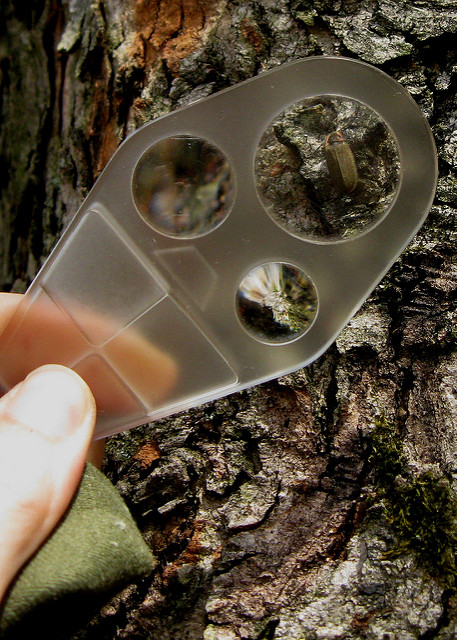Starting just about now, the landscape begins to change dramatically from week to week. You walk the same trails, but new things emerge and appear. The spring season is a naturalist’s crunch time – there is so much to learn in such a short span.
That little plant you walk by week after week and can’t identify finally blooms! The hole in the ground, partly covered by last fall’s leaves, that you check every time you pass is suddenly cleaned out and obviously in use again. The question arises, used by whom? Trees that remain unnamed due to hard-to-key-out bud or bark push baby leaves with a distinct shape, now easily recognizable in your field guide.
Spring grows by leaps and bounds in the coming months. Birds return, insects hatch, and reptiles and amphibians bask in the longer days and bright sunshine. Audubon is a wonderful place to watch all this happen, week by week, with varying length trails and habitats to suit everyone’s personal preferences.

One way to get out and see the changes happen, sometimes daily, is to become a Trail Guide Volunteer at Audubon. Not only do these folks get to go outside and walk the trails, they get to share it with students from Chautauqua and Warren counties. Field trips, called Discovery Walks, are the highlight of our spring. We love to see students engage with the outdoors, some of them seeing plants and animals for the first time in the wild. A child’s fascination with what adults often consider ordinary is inspiring. It is a reminder to slow down and find the magic in a handful of acorn tops, a half-eaten pine cone, or a hole in the edge of the trail.
Discoveries are often more exciting when you make them with a partner. When you can hold up your discovery and say “whoa! Look at this!” it means more to both the discoverer and the witness. The natural items that fill my shelves and windowsills at home often spark memories of time spent with friends and family. The beaver chewed stick is from the hike up to the beaver ponds. The jar of sand is a from a trip to the ocean. The bur-like acorn caps remind me of a revelation that the trees I had walked by for years were actually strange hybrids that I didn’t actually know and had to dig deep to find their identity.
On the trails at Audubon I can point to places where magical moments teaching kids have happened. Most of them happened organically, I didn’t plan it, rather it was a true discovery. There’s the spot under the Norway Spruces where one student tugged on the branch we were looking at and it exploded with pollen – so much that it looked like smoke. There is an area in the arboretum that has lots of dogbane, and when the students discovered that the thin, bean-like pods held flying seeds, it was like winter as they hunted and found more to open and set free.
One of my favorites is when we were looking at a dead deer, talking about decomposition and that all life ends and returns to the soil to get recycled into new plants. A little girl hung behind while others moved on to the underworld, and when I went back and asked if she had a question, her response was “no. I hope I come back as a flower.” And then she, too, was off onto the next thing, death not a scary or dark thing, but rather the opportunity to come back as something she loved.

Children are capable of remarkable insight, conclusion, and thought when given the opportunity to think. Trail Guides are trained in a method of teaching that allows kids to follow their own learning cycles and to engage at a level they desire. Trail Guides are just that, guides; they help curious students become more curious, to think more deeply, to ask more questions, to draw upon their previous knowledge to challenge or prove.
Trail Guides don’t have to be walking field guides, to know every tree or plant, or identify every bird song. Naturalists don’t know all of that, there is always more to learn. The enthusiasm with which you walk through the woods, the love in your heart at rolling over a log, the desire to know what might be swimming in the pond that day – those are the trademarks of a good trail guide.
Trail Guides are the people with whom the students are sharing their discoveries. Trail Guides are an integral partner in the magic that opens a child’s eyes as they connect deeply with their world. We would love to have you join the team and the training is coming up Wednesdays in April. Even if you decide that sharing nature with elementary students isn’t exactly what you want to do, you’ll meet a whole host of others that are enthusiastic about getting outside. Check online for registration or call Audubon for more information.
Whether you discover alone or with others, the changes that happen in the next eight weeks are breathtaking. From flowers to frogs and birds to bears, springtime awakens and invigorates. I hope you find time to get out and see the changes for yourself, and perhaps help us to change a child’s life for the better on a Discovery Walk.
Audubon Community Nature Center builds and nurtures connections between people and nature. ACNC is located just east of Route 62 between Warren and Jamestown. The trails are open from dawn to dusk as is Liberty, the Bald Eagle. The Nature Center is open from 10 a.m. until 4:30 p.m. daily except Sunday when it opens at 1 p.m. More information is found online at auduboncnc.org or by calling (716) 569-2345.
Sarah Hatfield is a naturalist at Audubon.


Recent Comments